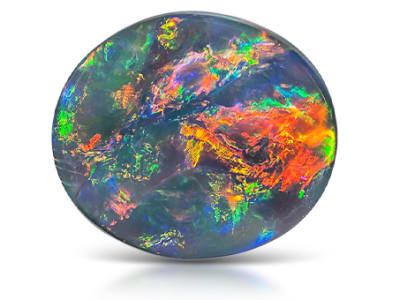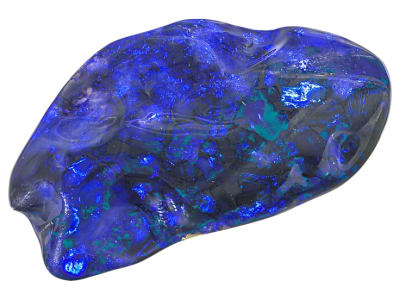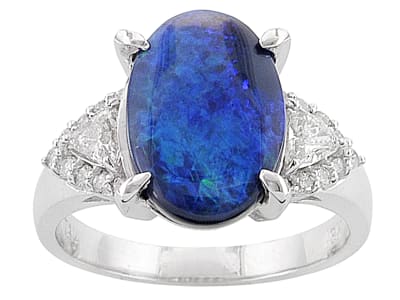Black opal is often called the “king of opals”. It was discovered in 1902 in Lightning Ridge, New South Wales, Australia. Black opal is the name given to any opal that displays “play of color” with a dark or black body color. Black opal is the most valuable variety of opal. Black opal is also known to come from the United States, Ethiopia, Honduras, and Ethiopia. Lightning Ridge black opal has a thin layer of precious opal over dark potch opal. It is proposed the Ethiopian black opal gets its color from manganese oxides.
General Information
LWUV: Inert, white, light blue, green and yellow
Black Opal Colors
-
 Bi-color
Bi-color -
 Black
Black -
 Brown
Brown -
 Gray
Gray -
 Multi-color
Multi-color
Countries of Origin
Hungary; Unknown; United States of America; Brazil; Honduras; Australia; Peru; Ethiopia; Indonesia
History
The most famous black opal comes from Lightning Ridge, Australia. Opal was discovered in the area in the late 1800’s. The first shafts were dug sometime between 1901 to 1902 by Jack Murray. Charles Nettleton dug his first shaft in October 1902. In 1903 Nettleton sold his first parcel of black opal for $30. The first recorded opal cutter was Charles Deane in 1907 at Old Town at the Wallangulla Opal Fields. Opal mining in Lightning Ridge began to decline in the 1920’s. After the introduction of machination in 1958 there was a resurgence of opal mining at the Ridge. The Asian market drove demand for new material in the 1980’s to the 1990’s. In 1989 black opal was discovered at Lake Coocoran just north of the Ridge.
Black opal is also known to come from various other locations around the world. It was discovered in Mintabie, Australia in the mid 1970’s but very little is produced today. Black oolitic opal has been reported from Andamooka, Australia in 1982. A small vein of black opal was reported from the Boi Morto mine, Pedro II, Piauí, Brazil in 1974. The opal mines in Honduras have been known since the early 1800’s but black opal from the Tablon Mine, Erandique, Lempira Department, Honduras was described in 1999. It became known to the gemstone trade in 2006. Black opal has been reported from Borsod-Abaúj-Zemplén County, Hungary. In 1995 black opalized fossil wood was found near Banten, Indonesia. Precious opal was first discovered from Humboldt County, Nevada in 1905 and currently has pay to dig black opal mines operating in the area. Ethiopian black opal was reported in 2011 from Wollo, Ethiopia.
Care
Avoid excessive heat, solvents, and ultrasonic cleaners.



